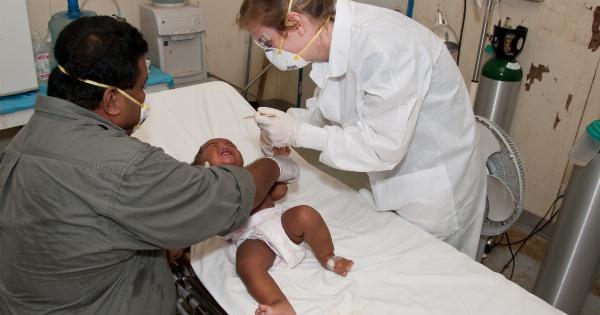Benign Prostatic Hypertrophy (BPH) is a common condition that affects men as they age. It is characterized by the enlargement of the prostate gland, which is located below the bladder and surrounds the urethra.
BPH is a natural development in men and is not typically associated with any serious health risks. However, it can cause bothersome urinary symptoms and affect the quality of life for some individuals. In this article, we will explore the causes, symptoms, diagnosis, and treatment options for BPH.
Causes of Benign Prostatic Hypertrophy
The exact cause of BPH is unknown, but several factors are believed to contribute to its development.
Hormonal changes that occur with advancing age, particularly an increase in the levels of dihydrotestosterone (DHT), are thought to play a crucial role. Additionally, genetic factors, inflammation, and hormonal imbalances may also contribute to the development of BPH.
Symptoms of Benign Prostatic Hypertrophy
BPH can cause a variety of urinary symptoms, which can range from mild to severe. Some of the common symptoms include:.
- Frequent urination
- Urinary urgency
- Nocturia (waking up at night to urinate)
- Weak urine flow
- Difficulty starting urination
- Dribbling at the end of urination
- Inability to completely empty the bladder
If you are experiencing any of these symptoms, it is essential to consult a healthcare professional for a proper evaluation and diagnosis.
Diagnosis of Benign Prostatic Hypertrophy
To diagnose BPH, your doctor will typically perform a physical examination, review your medical history, and assess your symptoms. Several tests may be recommended, including:.
- Prostate-specific antigen (PSA) blood test: This test measures the levels of PSA, a protein produced by the prostate gland. Elevated levels may indicate prostate-related issues, including BPH.
- Urinalysis: A urine sample may be analyzed to check for signs of infection or other urinary problems.
- Digital rectal exam (DRE): During a DRE, your doctor inserts a gloved, lubricated finger into the rectum to evaluate the size and condition of the prostate gland.
- Transrectal ultrasound (TRUS): This imaging test uses sound waves to create images of the prostate gland and surrounding structures.
- Uroflowmetry: This test measures the speed and volume of urine flow.
- Cystoscopy: In this procedure, a thin, flexible tube with a light and camera on the end (cystoscope) is inserted into the urethra and bladder to examine the urinary tract.
Treatment Options for Benign Prostatic Hypertrophy
The treatment of BPH depends on the severity of symptoms, the impact on quality of life, and the individual’s overall health. Here are some common treatment options:.
Watchful Waiting
If your symptoms are mild and not significantly affecting your daily life, your doctor may recommend a watchful waiting approach. This involves regular monitoring of your symptoms without immediate treatment.
Lifestyle Modifications
Simple lifestyle adjustments can help manage BPH symptoms. These may include:.
- Limiting fluid intake, especially in the evening
- Reducing caffeine and alcohol consumption
- Bladder training exercises
- Regular physical activity
Medications
There are several medications available to treat BPH, including:.
- Alpha-blockers: These medications relax the muscles around the prostate and bladder neck, allowing for better urine flow.
- 5-alpha reductase inhibitors: These medications block the conversion of testosterone to DHT, helping to shrink the prostate gland over time.
- Combination therapy: Some individuals may benefit from a combination of alpha-blockers and 5-alpha reductase inhibitors.
Minimally Invasive Procedures
When symptoms are more severe or medications do not provide sufficient relief, minimally invasive procedures may be considered. These procedures aim to reduce the size of the prostate gland or open up the urethra to improve urinary flow.
Some common options include:.
- Transurethral resection of the prostate (TURP): This procedure involves removing excess prostate tissue using a resectoscope inserted through the urethra.
- Transurethral incision of the prostate (TUIP): Similar to TURP, but instead of removing excess tissue, small incisions are made to widen the urethra.
- Laser therapy: Various laser techniques can be used to destroy or shrink excess prostate tissue.
Surgery
In severe cases or when other treatments fail to provide relief, surgery may be necessary. Surgical options for BPH include:.
- Open prostatectomy: A portion or all of the prostate gland is surgically removed through an abdominal incision.
- Transurethral resection of the prostate (TURP): In some cases, TURP may be performed as a surgical procedure rather than a minimally invasive option.
- Transurethral microwave therapy (TUMT): A probe inserted into the urethra delivers microwave energy to heat and destroy excess prostate tissue.
Conclusion
Benign Prostatic Hypertrophy is a natural development in men as they age, and while it may cause bothersome urinary symptoms, it is not typically associated with severe health risks.
If you are experiencing any symptoms of BPH, it is important to consult with a healthcare professional who can evaluate your condition and recommend appropriate treatment options. Whether through lifestyle modifications, medications, minimally invasive procedures, or surgery, there are various approaches available to manage BPH and improve your quality of life.



























